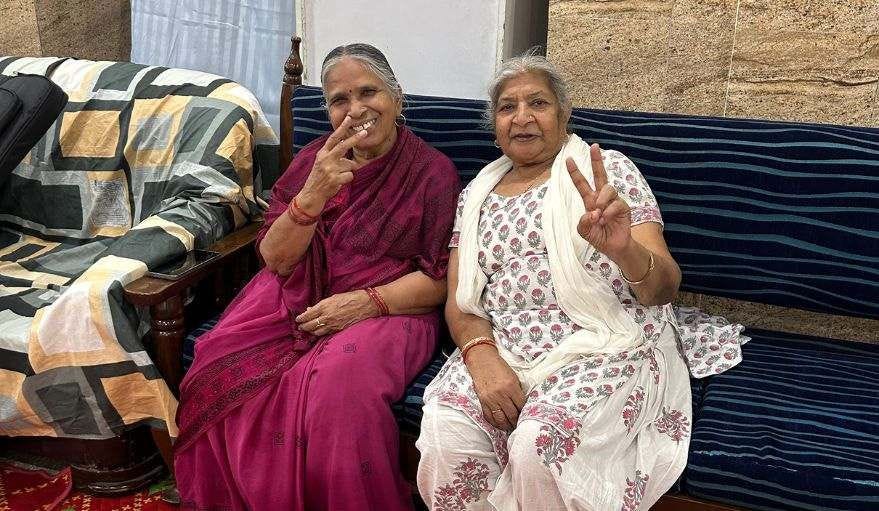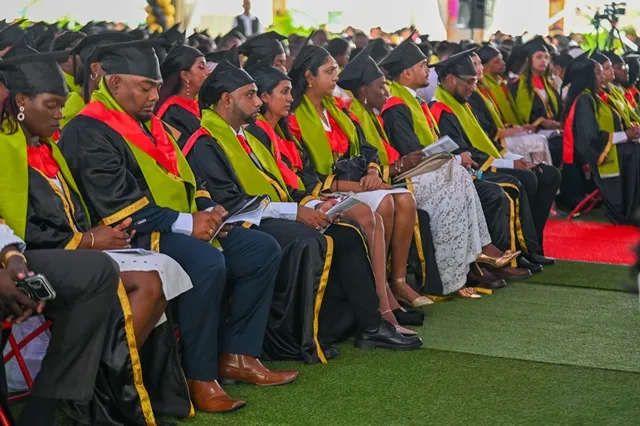BERBICE – From new highways and bridges to modern hospitals and housing schemes, Guyana’s landscape is being rapidly reshaped by an ambitious development drive fueled by oil revenue and strategic investments. As the government nears the end of its first term, it has accelerated a slate of transformative projects across the country aimed at boosting connectivity and improving quality of life for all Guyanese. The scale of ongoing works is unprecedented. In the 2025 national budget – Guyana’s largest ever at G$1.38 trillion – a whopping $209 billion was allocated specifically for public infrastructure upgrades. These funds are propelling construction on several flagship initiatives long dreamed of by citizens.
One of the most anticipated is the new Corentyne River bridge linking Guyana and Suriname. After years of talks, the two countries are moving to finally connect their territories across the Corentyne. Finance Minister Dr. Ashni Singh earmarked G$5 billion in budget 2025 to kick-start construction on the bridge once final agreements with Suriname are wrapped up. The bridge, to be sited near Guyana’s Moleson Creek, will end the reliance on slow ferries and is expected to unlock trade and travel between the neighbors. It is paired with the Palmyra to Moleson Creek highway, a new road cutting across Berbice to the bridge’s location. The government signed a US$162.7 million financing deal in January with China Road and Bridge Corporation to build a segment of this highway, upgrading it to a modern four-lane thoroughfare. In parallel, works are advancing on a new Berbice River bridge to replace the aging floating bridge that currently links eastern and western Berbice. Some G$5 billion was set aside to commence that project as well. Taken together, these investments are poised to make Region Six a bustling corridor of commerce – part of President Irfaan Ali’s vision to integrate Guyana with its neighbors and transform the country into a logistics hub.
Road improvements are not limited to Berbice. In Region Four, the East Coast–East Bank Road Expansion from Sheriff Street to Mahaica is underway, with G$17.5 billion dedicated to widening and extending the crucial railway embankment road to ease chronic traffic around Georgetown. On the East Bank Demerara, crews are completing the final stretch of the new highway from Diamond to Timehri, slated to finish by year-end and vastly improve access to the international airport. Meanwhile in the hinterland, the first phase of the Linden to Mabura Hill paved road is nearing completion, bringing hinterland communities closer to the coast. Residents are already feeling the benefits: “Better roads mean our farm produce gets to market faster and cheaper,” says one Mahaica farmer, noting a drop in transportation costs since feeder roads in his area were upgraded. The government touts these projects as part of a “National Transformation” strategy – a coordinated push to open up every region, create jobs, and attract new businesses beyond the oil sector.
Beyond concrete and steel, investment in human capital and public services has also surged. In the health sector, Guyana has embarked on Phase 2 of a landmark partnership with the US’s Mount Sinai Health System and Hess Corporation to overhaul public healthcare by 2030. Under a US$125 million programme, a National Cancer Centre will be established and regional hospitals upgraded with cutting-edge technology. The plan also includes a nationwide electronic medical records system to digitize patient care – with a pilot at Georgetown Public Hospital expected within months. On the water front, a US$76 million project financed by the Caribbean Development Bank is rehabilitating water treatment plants and expanding access to clean water for 15,000 households across five regions. Education, too, has seen historic changes: as of January, the University of Guyana is tuition-free for all undergraduates – a promise long made, now fulfilled. Enrollment at UG has spiked as a result, with over 11,000 students expected to benefit from free degrees starting in the 2025/2026 academic year. “Tuition is free from January 1, 2025, for all new and continuing students… fulfilling a major campaign promise,” a government release proclaimed. The administration is coupling this with thousands of online scholarships (through the GOAL program) to build a more skilled workforce equipped for the diversifying economy.
Perhaps no area better illustrates the development push than housing. In 2020 the PPP/C government pledged to distribute 50,000 house lots in five years – a goal once viewed as ambitious, now within reach. By the end of 2024, over 45,000 lots had been allocated countrywide, and officials now say 25,000 more lots will be prepared in 2025 alone to clear remaining backlogs. Massive new housing schemes have sprung up from Cummings Lodge on the coast to Lethem in the Rupununi. The Dream Realised housing drives bring together land allocation, bank financing, and even pre-approved home building plans under one tent, helping thousands of families move from renting to homeownership. Additionally, the government is directly constructing affordable housing units – including 3,500 “young professional” homes slated for completion by early 2025 – to ease the housing shortage. Minister of Housing Susan Rodrigues notes that about 38,000 individuals will gain new homes through these initiatives, calling housing “a major strength for [the] PPP in 2025” and proof of promises kept.
All this development comes amid Guyana’s extraordinary economic rise, propelled by offshore oil discoveries. But President Ali frequently emphasizes that “oil wealth must translate into real wealth for the people”. To that end, beyond big-ticket projects, the government has boosted salaries for public servants by over 50% cumulatively, resumed cash grants to schoolchildren, and invested in community projects like solar farms and ICT hubs in villages. The pace has not been without growing pains – there are concerns about construction quality, bureaucratic delays, and ensuring local content in these projects. The political opposition argues that rural and interior regions still need more decentralization of resources. Nonetheless, few can deny that the country today is a beehive of activity. As bulldozers rumble and cranes dot the skyline, Guyana is experiencing a physical and socioeconomic transformation. In the words of a recent IMF report, “rapidly expanding oil production, coupled with robust public investments, is revolutionising Guyana’s development trajectory”. The true measure of success, however, will be seeing these roads lead to lasting opportunities – connecting every Guyanese to the brighter future now under construction.Â




